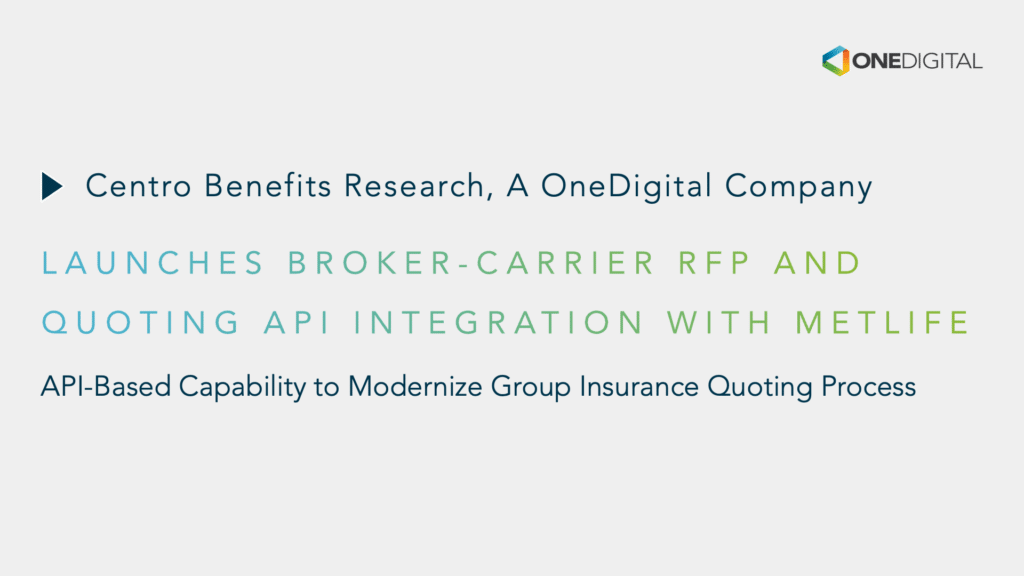Better Benefits
5 Ways that Real-Time Connectivity is Changing the Benefits Administration Game
5 Ways that Real-Time Connectivity is Changing the Benefits Administration Game
The digitization of employee benefits administration is old news. However, API-based solutions with real-time connectivity represent an enormous improvement over their predecessors.
Benefits administration platforms are commonly discussed as a matter of “paper” vs. “digital," but this terminology actually glosses over significant gulfs between different digital product types. In fact, we are currently in the midst of an extremely consequential transition away from digital programs based on Electronic Data Interchange (EDI) and towards those that use Application Programming Interfaces (API) to create a superior experience for HR professionals and vendors alike. Once complete, this transition will save millions of man-hours annually and greatly improve one of the most confusing and frustrating parts of the modern employee experience.
EDI vs. API – What’s the difference?
EDI-based benefit administration platforms work by referencing old-school paper-based practices and duplicating them in a digital form. While EDI solutions were revolutionary at the time of their introduction, these types of benefits administration platforms do not fully tap into the potential efficiency gains that are possible in a fully-digitized world.
API-based products are superior to their EDI forebearers and bring benefits administration into the modern era. They do this by allowing employers to leverage many sophisticated digital capabilities that consumers already experience in their other online interactions, transforming the exchange of benefits information into a more fluid and responsive process. The market share of API-based products is growing rapidly: research by Guardian shows that 1 in 5 American employers is currently making use of API in benefits administration, which is up from 1 in 20 employers in 2019.
As the headline of this blog suggests, the simplest way to explain the value proposition of API-based services is that they offer “real-time communication” between carriers, administration platforms, and enrollees – but what exactly does that mean?
Below, we’ve unpacked this loaded term into five clear benefits that API is providing to adopters:
1. Data is packeted in individual transfers
Data sent via API-based tools is able to be packaged as individual, discrete transactions as opposed to the large batches used by EDI. This individualized approach is far more nimble and allows for small changes to be recorded without the need to revise entire accounts.
2. Continuous information exchange
Furthermore, API-based benefits administration platforms allow for all parties to continuously “talk” to each other and provide these updates on a rolling basis. This real-time exchange ensures that any relevant changes are recorded and shared immediately and that enrollee information is as up-to-date as possible. This contrasts with EDI-based tools, which are only capable of sending data between clients and vendors in periodic updates at less frequent intervals.
3. Two-way communication
Another impactful capability is the fact that API tools allow for benefit administrators and carriers to talk to each other rather than at each other. It may sound trivial, but this back-and-forth is much different than the EDI status quo, which only allows for one-way in-platform communication where benefit administrators push information out to carriers.
4. No testing or reconciliation
The seamlessness of API communication means that there is no need for employers or benefit administrators to test large EDI files or perform periodic reconciliation checks between different data sets. With all parties operating within the same real-time, cloud-based framework, the potential for human error is greatly reduced.
5. Direct vendor integration
Contemporary API platforms allow vendors and carriers to interface with benefits administrators at a nuts-and-bolts level, which significantly reduces the need for manual data entry and dramatically boosts efficiency. This approach aligns benefits administration practices with modern consumer expectations and empowers stakeholders at all levels of the chain to work together and deliver a simplified and improved experience.
The real-time connectivity capabilities provided by API-based benefits administration programs offer a clear edge over EDI programs and non-digital practices. API adoption levels are steadily increasing across businesses of all types and sizes, and it is likely that these programs will become the industry standard. If your business hasn’t already made the switch, it’s worth thinking about doing so before your next open enrollment.
For more benefits administration insights from Ben, check out his blog on 3 Ways to Improve Open Enrollment in 2023.




